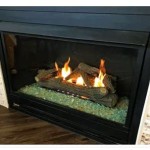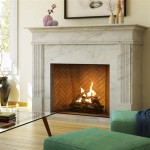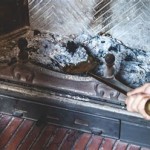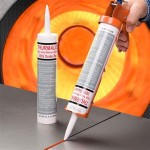Outdoor Fireplace Construction: A Comprehensive Guide
The allure of an outdoor fireplace is undeniable. It provides warmth, ambiance, and a focal point for social gatherings. Constructing an outdoor fireplace, however, is a significant undertaking that requires careful planning, adherence to safety regulations, and a thorough understanding of building techniques. This article provides a comprehensive overview of the process, covering essential considerations from initial design to the final finishing touches.
Before embarking on the project, it is crucial to assess local building codes and regulations. Most municipalities require permits for outdoor fireplace construction, and these permits often stipulate specific setbacks from property lines, restrictions on fuel type (wood, gas, or propane), and mandatory safety features. Failure to comply with these regulations can result in fines or even the forced removal of the structure. Contacting the local building department and familiarizing oneself with the applicable codes is a vital first step.
Following regulatory research, the design phase begins. This involves determining the size, style, and materials of the fireplace. These choices are deeply intertwined and impacted by the intended use, the surrounding landscape, and individual aesthetic preferences. A large fireplace will provide more heat and be more visually imposing, while a smaller fireplace may be more suitable for intimate gatherings and smaller outdoor spaces.
Style considerations range from rustic stone fireplaces to modern designs incorporating clean lines and contemporary materials. The chosen materials must be durable, weather-resistant, and capable of withstanding high temperatures. Common materials include brick, stone, concrete blocks, and fire-resistant mortars. Proper selection and installation of these materials are paramount to the structural integrity and longevity of the fireplace.
Planning and Design Considerations
The initial phase of outdoor fireplace construction focuses on meticulous planning and design. This stage establishes the foundation for a successful and enduring structure. Several key elements require careful consideration.
Firstly, site selection is paramount. The fireplace should be located in an area that is easily accessible, sheltered from strong winds (which can create hazardous conditions), and away from flammable materials such as trees and dry vegetation. Adequate clearance around the fireplace is essential to minimize the risk of fire spreading. Consider prevailing wind direction to minimize smoke nuisance to neighbors.
Secondly, the foundation is a critical component of any fireplace. It must be able to support the considerable weight of the structure and prevent settling or shifting over time. A concrete slab is the most common type of foundation. The slab's thickness and reinforcement will depend on the size and weight of the fireplace. Soil conditions must be assessed to ensure adequate bearing capacity. In areas with unstable soil, deeper footings or other stabilization measures may be necessary.
Thirdly, drafting a detailed plan is essential. This plan should include precise measurements, material lists, and construction details. The plan should also specify the dimensions of the firebox, the chimney, and any other features such as hearth extensions or storage areas. Having a well-defined plan ensures that the construction process proceeds smoothly and that the finished product meets expectations. Consider consulting with a qualified architect or structural engineer, especially for complex designs.
The firebox dimensions are critical to ensuring proper combustion and heat output. Too small a firebox may limit the size of the fire, while too large a firebox may result in inefficient burning and excessive smoke. The chimney design is also critical. The height and diameter of the chimney must be properly calculated to create adequate draft and ensure that smoke is effectively vented away from the surrounding area. An insufficient chimney can lead to smoke billowing back into the seating area, creating a nuisance and a potential health hazard.
The hearth extension is a non-combustible surface that extends outwards from the front of the fireplace. It protects the surrounding area from sparks and embers that may escape from the firebox. The size and material of the hearth extension are typically dictated by local building codes. Common materials for hearth extensions include brick, stone, and concrete.
Construction Techniques and Material Selection
The construction phase involves translating the design plan into a tangible structure. This requires knowledge of masonry techniques, proper material handling, and a commitment to quality workmanship.
Choosing the right materials is paramount. Fire brick is specifically designed to withstand the intense heat of a fire and should be used to line the firebox. Regular brick or concrete blocks can be used for the outer walls of the fireplace. The mortar used for bonding the bricks or blocks must be a fire-resistant type specifically formulated for high-temperature applications. Standard mortar will crumble and fail under extreme heat.
The construction process typically begins with laying the foundation. The concrete slab should be properly cured before beginning to build the fireplace. Once the foundation is ready, the walls of the firebox and the chimney can be constructed. Proper mortar joints are essential for structural integrity and weather resistance. The bricks or blocks should be laid in a staggered pattern to create a strong and stable wall. Reinforcement with rebar or other materials may be necessary, particularly in areas prone to seismic activity.
The chimney construction requires particular attention to detail. The chimney should be built with a flue liner, which is a ceramic or metal pipe that protects the chimney walls from heat and corrosive combustion gases. The flue liner should extend the entire length of the chimney and should be properly sealed to prevent leaks. The chimney should also be capped to prevent rain and debris from entering the flue.
The firebox should be constructed with a slight slope towards the back to facilitate drainage. A damper can be installed in the chimney to control the draft and prevent heat loss when the fireplace is not in use. The damper should be made of durable metal and should be properly sized for the chimney.
As the walls rise, careful leveling and plumbness are critical. Check frequently with a level and plumb bob to ensure accuracy. Off-kilter construction can compromise structural integrity and the aesthetic appeal.
For stone fireplaces, the selection and placement of stones require careful consideration. The stones should be of varying sizes and shapes to create a natural and aesthetically pleasing appearance. The stones should be properly mortared together, and any gaps should be filled with smaller stones or mortar. Experienced stonemasons often employ dry-stacking techniques, which involve carefully fitting the stones together without mortar, creating a visually stunning and durable structure.
Safety Considerations and Finishing Touches
Safety is of utmost importance throughout the entire construction process and after the fireplace is completed. A thorough understanding of fire safety principles and adherence to safety regulations are essential to prevent accidents and ensure the safe operation of the fireplace.
Before using the fireplace for the first time, it is crucial to inspect it thoroughly for any defects or potential hazards. Check the chimney for obstructions, ensure that the damper is functioning properly, and verify that the hearth extension is adequate. It is also recommended to have the fireplace inspected by a qualified professional to ensure that it meets all safety regulations.
When using the fireplace, never leave it unattended. Keep flammable materials away from the firebox and the hearth extension. Use a fire screen to prevent sparks from escaping and igniting nearby materials. Never use accelerants such as gasoline or kerosene to start a fire. Burn only dry, seasoned wood. Avoid burning trash or other materials that may produce toxic fumes.
Regular maintenance is also essential for ensuring the safe and efficient operation of the fireplace. The chimney should be cleaned regularly to remove creosote, a flammable substance that can build up in the flue. The frequency of chimney cleaning will depend on the amount of use and the type of wood burned. A qualified chimney sweep can inspect the chimney and perform the necessary cleaning.
The finishing touches can enhance the aesthetic appeal of the fireplace and make it a more enjoyable outdoor space. Consider adding a mantel, a decorative surround, or other architectural details to complement the surrounding landscape. Outdoor lighting can be used to create a warm and inviting atmosphere. Comfortable seating and other outdoor furniture can make the fireplace a focal point for social gatherings.
Landscaping around the fireplace can also enhance its appearance and create a more inviting outdoor space. Consider planting fire-resistant plants and shrubs around the fireplace. A paved patio or walkway can provide a safe and convenient surface for seating and entertaining. A well-designed landscape can transform an outdoor fireplace into a beautiful and functional feature of the property.
Proper drainage is crucial to prevent water damage to the fireplace and the surrounding area. Ensure that the foundation is properly sloped to allow water to drain away from the structure. Install drainage pipes or French drains to divert water away from the fireplace. Water damage can weaken the structure and accelerate its deterioration.
Weatherproofing the fireplace is essential to protect it from the elements. Seal any cracks or gaps in the mortar joints to prevent water from entering the structure. Apply a waterproof sealant to the exterior surfaces of the fireplace. Weatherproofing will extend the lifespan of the fireplace and protect it from damage caused by rain, snow, and ice.
By carefully considering these factors and following proper construction techniques, it is possible to build an outdoor fireplace that is both beautiful and functional, providing years of enjoyment for family and friends.

How To Build An Outdoor Stacked Stone Fireplace

How To Build An Outdoor Fireplace Step By Guide Buildwithroman

Pima Ii Diy Outdoor Fireplace Construction Plan

Outdoor Fireplace With Bench Seating W Tips From A Professional Mason
:max_bytes(150000):strip_icc()/livingstonemasonary-154847150f2a49558b21b5a93d08dfc9.jpg?strip=all)
10 Free Outdoor Fireplace Construction Plans

Diy Outdoor Fireplace Construction Plan And Voids
:max_bytes(150000):strip_icc()/milkpaint-286c9ee63b604ca1aaecac5233c8a3f3.jpg?strip=all)
10 Free Outdoor Fireplace Construction Plans

Diy Outdoor Fireplace Plans Stone Fireplaces Designs

Pima Ii Diy Outdoor Fireplace Construction Plan Sweden Designs Patio
:max_bytes(150000):strip_icc()/theshed-502c277988c14e118b4ad4f3cfc54a90.jpg?strip=all)
10 Free Outdoor Fireplace Construction Plans
Related Posts








